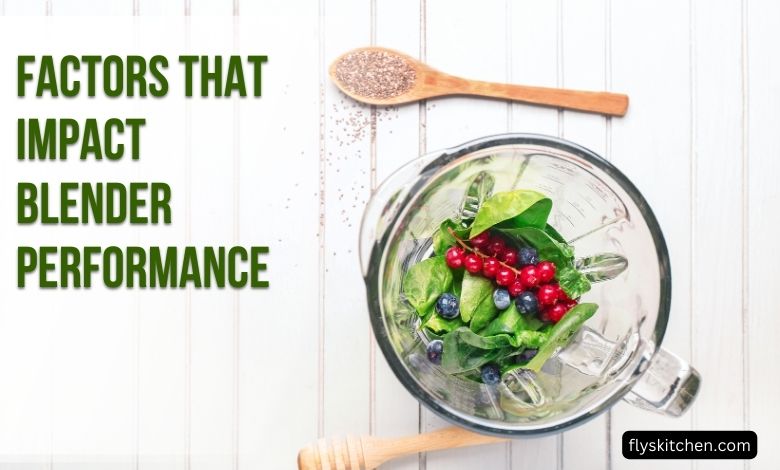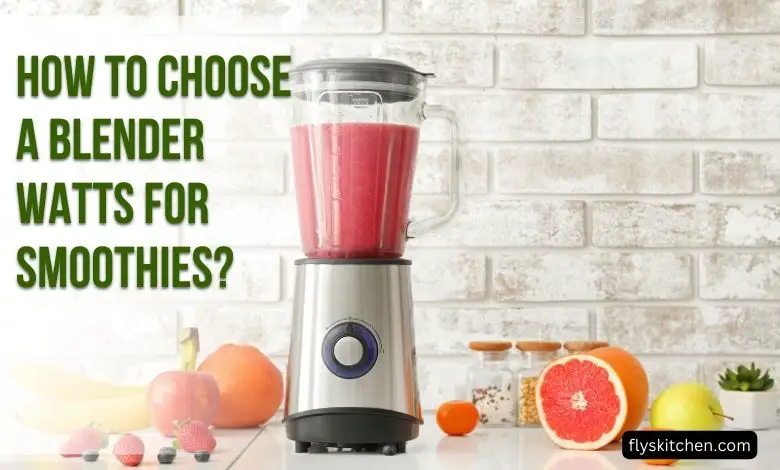Smoothies have become a popular and convenient way to get more fruits and vegetables into your diet. Blending allows you to pack nutrients from whole foods into a portable, drinkable meal or snack. But in order to make smoothies properly, you need a blender powerful enough to thoroughly puree tough ingredients like frozen fruits and leafy greens. Choosing the right wattage blender for smoothies can make all the difference in achieving a perfectly smooth texture.
Contents
Why Wattage Matters for Smoothies?
Wattage indicates the power and performance capacity of a blender. Blenders with higher wattage have more horsepower to handle tougher ingredients with less strain on the motor. When making smoothies, you need a blender that can pulverize ice, frozen fruit, nuts, seeds, and fibrous greens into a creamy consistency. Low-powered blenders often struggle to break down these hard ingredients, resulting in annoying chunks in your smoothie.
Higher-wattage blenders can also process smoothies faster. This allows for less oxidation, preserving more nutrients and flavor. The high speeds of powerful blenders introduce air into the smoothie, making it frothy and shake-like. More watts also equate to more versatility should you want to use your blender for tasks beyond smoothies, like soups, nut butters, or mixing batters.
Blender Watts Recommended for Smoothies
For the smoothest texture, you’ll want a blender with at least 500 to 1000 watts for smoothies. Many experts recommend aiming for at least 700 watts. This power level will pulverize just about any smoothie ingredient you can throw at it.
Here are some general blender wattage guidelines for smoothies:
- 300-500 watts: Lower-end blenders in this range may struggle with frozen ingredients and fibrous greens. Best for simple fruit smoothies.
- 500-700 watts: Great for most basic to moderate smoothie recipes with some frozen fruit and veggies.
- 700-1000 watts: Ideal wattage for handling any smoothie recipe, including those with harder frozen ingredients and leafy greens.
- 1000+ watts: High-performance blenders that excel at smoothies with tough ingredients. Provides exceptionally smooth textures.
While higher wattages generally perform better, blender design also impacts effectiveness. A well-designed 500-watt blender may still outperform a poorly designed 1000-watt model. But for simplicity, wattage offers a helpful starting point for choosing a capable smoothie blender.
Common Blender Watts on the Market
To give you a better idea of real-world wattages, here’s an overview of the power specs for popular blender models:
- Personal blenders: 200-400 watts
- Basic blenders: 300-700 watts
- High-performance blenders: 800-1300+ watts
Personal blenders in the 200-400 watt range work well for single-serve smoothies with softer ingredients or powder supplements. But they often struggle with larger batches.
Basic blenders around 300-700 watts allow you to make standard smoothies in larger quantities. Many popular budget-friendly models from brands like Oster, Hamilton Beach, and KitchenAid fall within this blender category.
High-performance blenders take it to the next level with 800 watts or higher. Top models include Vitamix, Blendtec, and Ninja blenders which all contain motors starting around 1500 watts. That exceptional power pulverizes through anything to create ultra-smooth smoothies. But they come at a higher price point.
So target a blender in the 500-1000 watt range as the ideal for most smoothie needs and budgets. Pay attention to whether the watts listed are for the motor or for the peak power output. Motor watts give a better indication of consistent blending power.
Other Factors that Impact Blender Performance

While wattage provides a helpful starting point, don’t make the mistake of judging a blender solely by its specified watts. Here are some other aspects that factor into a blender’s effectiveness:
- Blade design: Blades should be sharp and sturdy. Curved blades and blades with special angles or tip designs improve blending.
- Jar design: A blender jar shape engineered to create a vortex effect improves circulation and blending.
- Speed settings: Variable speed with high max speeds improves control and performance.
- Safety features: Built-in sensors, cooling systems, and overload protection expand durability.
- Ease of use: User-friendly controls and intuitive interfaces maximize convenience.
- Brand reputation: Stick with well-known blender brands that back their products with warranties.
So while wattage offers a helpful starting gauge, don’t equate higher watts directly with better performance. Focus on choosing a reputable blender with smart design optimized for smoothie making.
Smoothie Blender Watts FAQ
How many watts are needed for green smoothies?
Green smoothies containing tough leafy greens like kale, spinach, or swiss chard require more power to break down. Aim for a blender with at least 700 watts to pulverize the fibrous greens into a silky texture.
Can you make smoothies with a 300-watt blender?
Yes, 300-500 watt blenders can make smoothies containing softer fruits and vegetables. But it may have trouble fully incorporating frozen ingredients or leafy greens.
Will a 1000-watt blender crush ice?
Yes, a 1000+ watt blender will have no problem crushing ice into snow-like texture for frozen smoothies. That motor power can pulverize through ice easily.
How long should a good blender last?
With proper care and maintenance, a quality blender in the 500+ watt range should last 5-10 years. High-performance blenders often come with warranties of 7 years or longer when used properly.
Key Takeaways for Choosing Blender Watts
- For smooth, lump-free smoothies, choose a blender with 500-1000 watts. This provides enough power to puree tough frozen fruits and fibrous greens.
- Pay attention to both motor watts and peak watts listed. Motor watts better indicate consistent blending power.
- Don’t equate higher watts automatically with better performance. Smart design like blade shape and jar style also impact results.
- Test blender performance with your intended ingredients. It should thoroughly puree frozen fruits, leafy greens, seeds, and ice without excessive strain.
- Buy from reputable blender brands that use high-quality components. This ensures durability and performance to last years of smoothie making.
With a properly powerful blender as part of your kitchen arsenal, you can whip up healthy, delicious smoothies packed with wholesome ingredients. So review blender wattage along with design when shopping for the best model to meet your smoothie needs and expectations.

